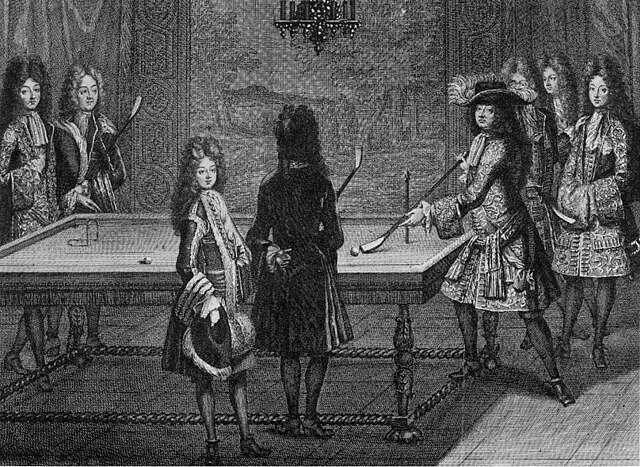Three-cushion billiards, also called three-cushion carom, is a form of carom billiards. The object of the game is to carom the cue ball off both object balls while contacting the rail cushions at least three times before contacting the second object ball. A point is scored for each successful carom. In most shots the cue ball hits the object balls one time each, although hitting them any number of times is allowed as long as both are hit. The cue ball may contact the cushions before or after hitting the first object ball. It does not have to contact three different cushions as long as it has been in contact with any cushion at least three times in total.
Three-Cushion World Cup game
Result sheet of Jérémy Bury's run of 24
Carom billiards, also called French billiards and sometimes carambole billiards, is the overarching title of a family of cue sports generally played on cloth-covered, pocketless billiard tables. In its simplest form, the object of the game is to score points or "counts" by caroming one's own cue ball off both the opponent's cue ball and the object ball on a single shot. The invention as well as the exact date of origin of carom billiards is somewhat obscure but is thought to be traceable to 18th-century France.
A carom billiard table and billiard balls
The Family Remy by Januarius Zick, c. 1776, featuring billiards among other parlour activities
A set of standard carom billiard balls, comprising a red object ball, one plain white cue ball, and one dotted white cue ball (replaced in modern three-cushion billiards by a yellow ball) for the opponent
Louis XIV playing billiards (1694)






